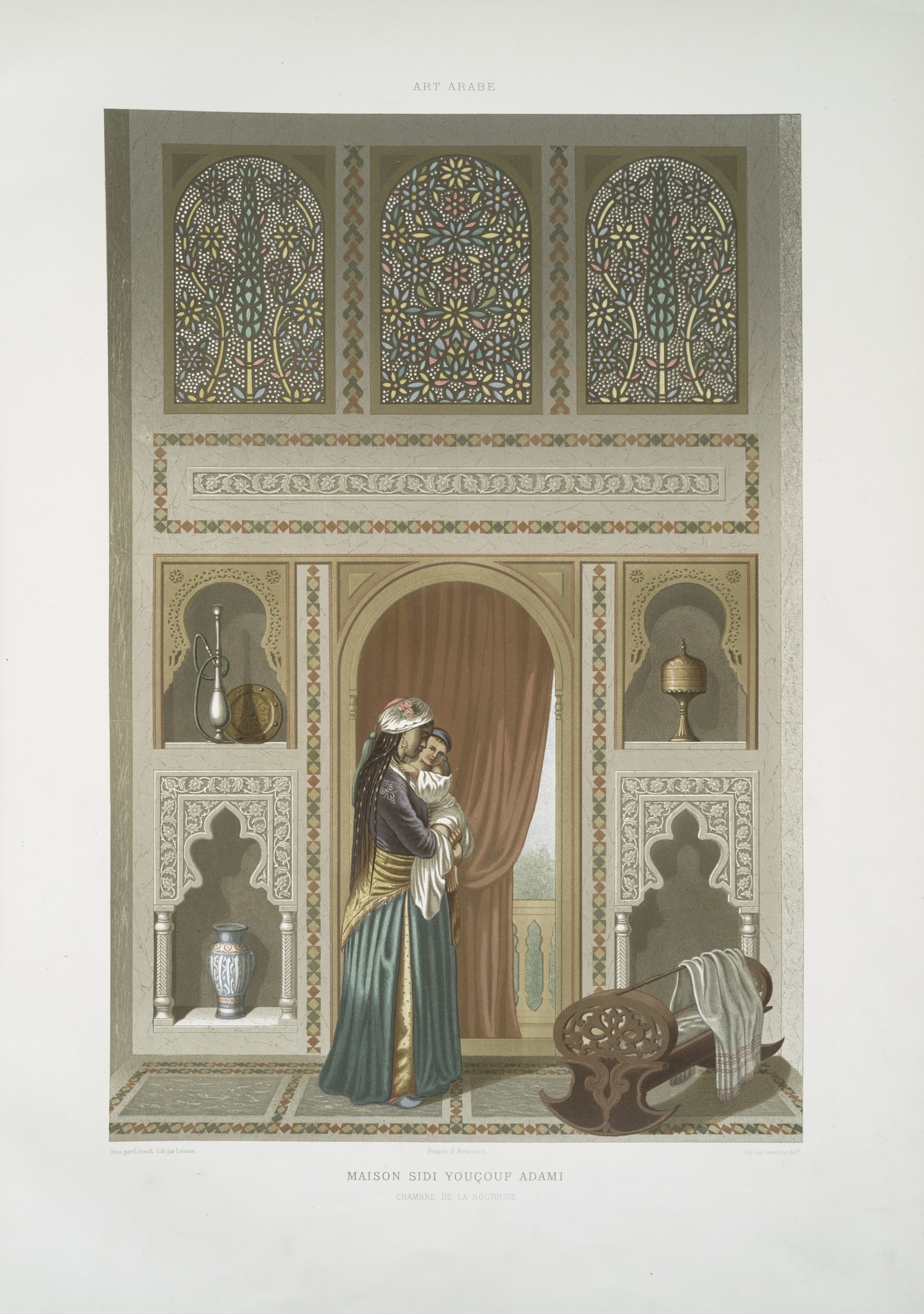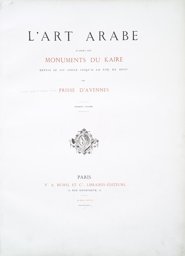Research
Émile Prisse d’Avennes published two illustrations from the ‘Maison Sidi Youçouf Adami’. He described this house, which – as far is known – no longer exists, as one of the most remarkable of Cairo and also made estampages of the stucco work (Fonds Prisse d’Avennes, Bibliothèque nationale de France). The Dutch painter Willem de Famars Testas (1834–1896), who accompanied Prisse d'Avennes on the trip to Egypt in 1858–1860, listed in the drawings he made for the archaeologist ‘Dessin de vitraux coloriés chez Mr Adami (Kaire)’. In his journal (around 29 June 1858), he mentioned the visit they made to Mr. Adami (Raven, 1988, p. 52, 194; Liste de mes occupations pour Mr* *Prisse lors de mon voyage en Egypte, Nr. 11).
The stucco and glass windows are not inserted in a mashrabiyya, but in the marble-covered wall. Two windows show the widely used motif of a cypress flanked by flower tendrils. However, the entwining tendril that this type of window often has (see IG_2) is not present. The middle window with flowers is even more unusual: there is no stem, and the flowers float freely. A bouquet of flowers is a common motif for stucco and glass windows, but the flowers are always attached to a central stem and usually put in a vase (see IG_1). Although the archaeologist Prisse had a deep knowledge of stucco and glass windows, he seems to have taken certain liberties in depicting them. One reason for this may be that another person, the German painter Bernard Schmidt, drew the illustration (as noted at the bottom of the plate).
In 1897, the window with a cypress was reprinted by Lewis Foreman Day, in his Windows. A Book About Stained & Painted Glass (fig. 7).
Dating
1877
Related Locations
Building, Cairo
· Cairo, Maison Sidi Youçouf Adami : chambre de la nourrice
Place of Manufacture


